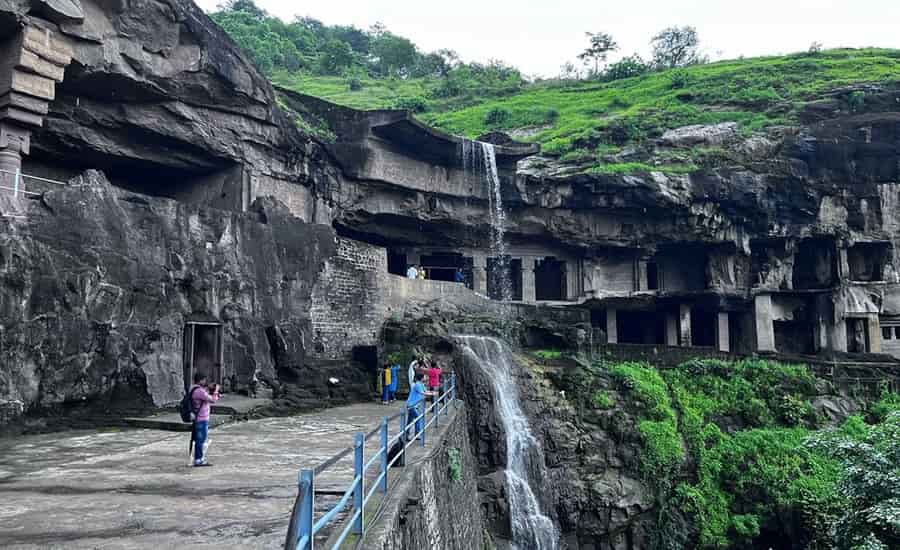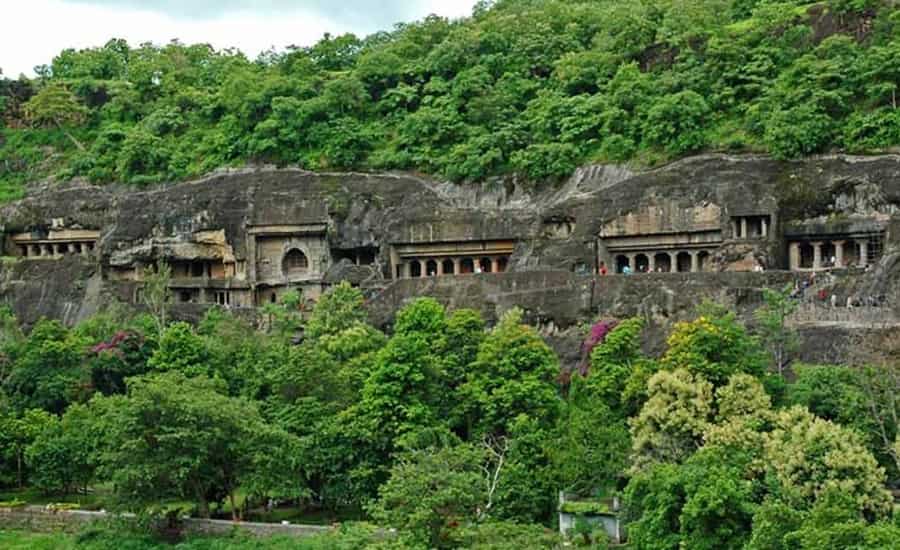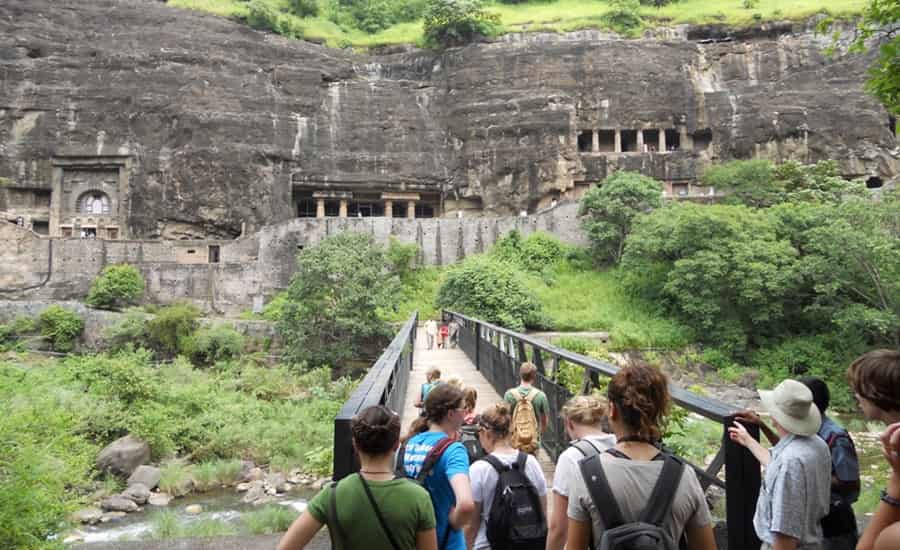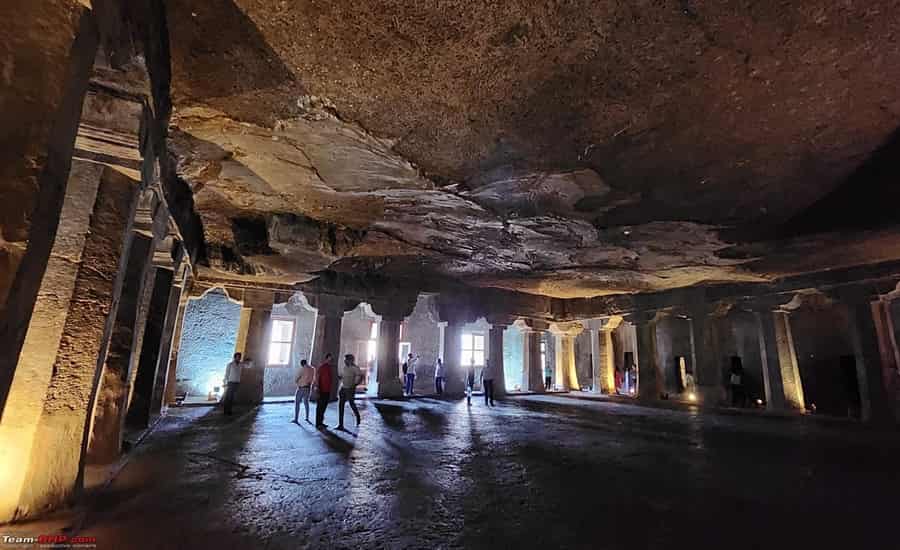The Ajanta Caves, nestled in the heart of Maharashtra, India, stand as a testament to the ancient craftsmanship and artistic prowess of the region. Carved into the rock, these caves date back to the 2nd century BCE and showcase exquisite…
Ajanta Caves
- Location: Ajanta Caves are situated in Maharashtra, India.
- Date of Creation: The caves were carved out of rock between the 2nd century BCE and the 6th century CE.
- Purpose: Ajanta Caves served as a Buddhist monastic complex and features both chaityas (prayer halls) and viharas (monasteries).
- Artistic Style: Known for their exquisite frescoes and sculptures, the caves showcase a unique blend of Indian and foreign artistic styles.
- Themes: The paintings and sculptures depict scenes from the life of Buddha, Jataka tales, and various other mythological narratives.
- Discovery: Rediscovered in 1819 by a British officer named John Smith, the caves were hidden for centuries before that.
UNESCO World Heritage Site: Ajanta Caves were designated a UNESCO World Heritage Site in 1983. - Cave Count: There are a total of 30 caves, with Cave 1 being a significant chaitya hall, and Cave 26 featuring impressive murals.
- Cultural Significance: Ajanta Caves are a testament to the rich cultural and artistic heritage of ancient India, attracting visitors and scholars from around the world.
- Timings:9 AM to 5 PM
- Entry Fee:
- Indian, SAARC and BIMSTEC Countries: INR 40
- Foreign Tourists: INR 600
- Children (Under 15): Entry is free
The Ajanta Caves, a UNESCO World Heritage Site located in Maharashtra, India, are a remarkable testament to ancient Indian art and architecture. Dating back to the 2nd century BCE, these caves are a series of 29 rock-cut structures carved into the face of a cliff along the Waghora River. The caves primarily served as Buddhist monastic retreats and sanctuaries, showcasing exquisite paintings and sculptures that depict the life of Buddha, Jataka tales, and various other mythological narratives. The art within the Ajanta Caves is renowned for its precision, beauty, and thematic diversity, making it a pivotal example of classical Indian art.
One of the most striking features of the Ajanta Caves is the use of ancient rock-cut architecture, with intricately carved facades and interior chambers. The caves are divided into two phases – the first dating from the 2nd century BCE to the 1st century CE, and the second from the 5th to the 6th century CE. The artistic styles evolved over time, showcasing the transition from Hinayana to Mahayana Buddhist art. The vibrant frescoes and sculptures within the caves provide a glimpse into the rich cultural, religious, and artistic heritage of ancient India.
Despite being abandoned for centuries, the Ajanta Caves were rediscovered in the 19th century, attracting attention worldwide. The site stands as a remarkable testament to the creativity and skill of ancient Indian craftsmen and artists, offering visitors a unique opportunity to explore the intersection of spirituality and artistic expression in the heart of the Indian subcontinent.
History of Ajanta Caves
The Ajanta Caves, situated along the Wangorah River in Maharashtra’s Aurangabad district, stand as a testament to India’s rich cultural and artistic heritage. Discovered by chance in 1819 by British officer John Smith during a hunting expedition, these rock-cut cave…
How to Reach Ajanta Caves
The Ajanta Caves, located in the state of Maharashtra, India, are renowned for their ancient Buddhist cave monuments. Visiting this UNESCO World Heritage site requires careful planning, and understanding the transportation options available can greatly enhance your travel experience. In…
How to Plan a Trip to Ajanta Caves
Nestled within the rugged terrain of Maharashtra, India, the Ajanta Caves stand as a testament to ancient artistry and architectural brilliance. This UNESCO World Heritage site, comprising 30 rock-cut caves, offers a mesmerizing journey through time, showcasing exquisite Buddhist paintings…





 Call
Call WhatsApp
WhatsApp Enquiry
Enquiry